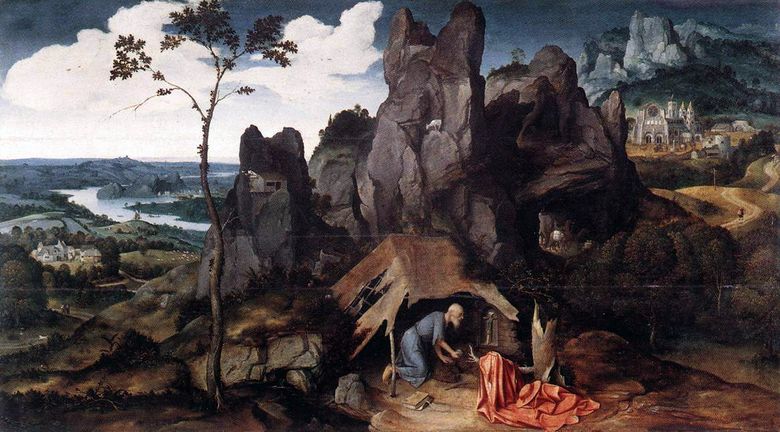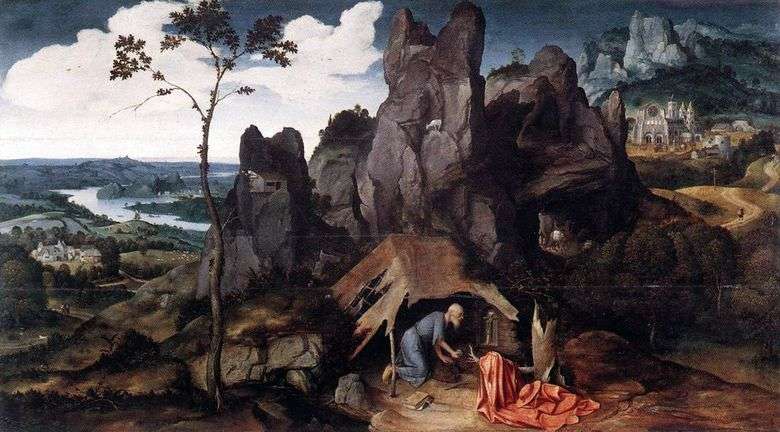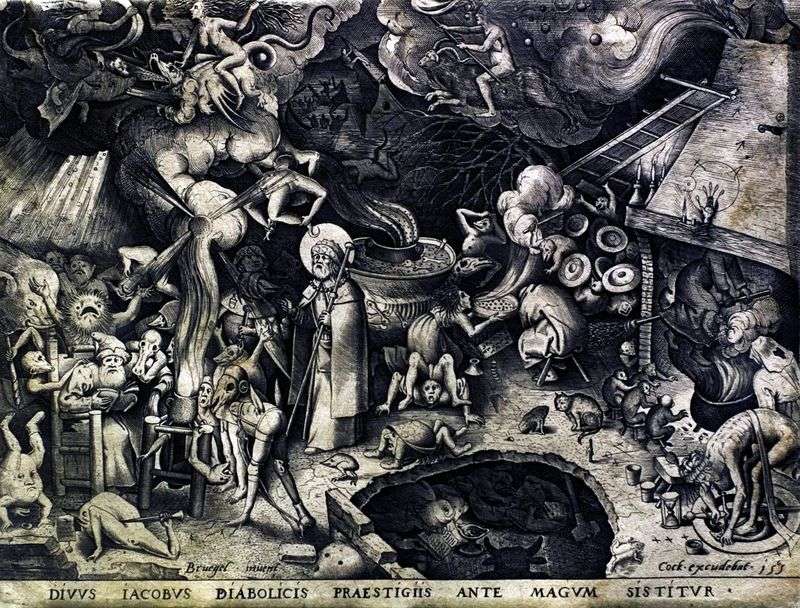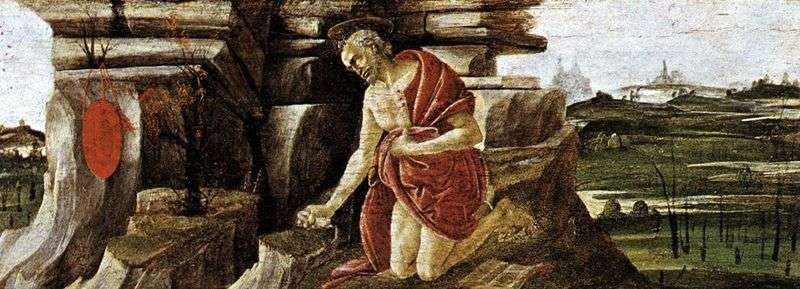
Joachim Patinir is counted among the forefathers of landscape art in the Northern Renaissance. For the first time in his work, nature acquired an independent meaning. The master departed from the traditions of the past, when the landscape served only as a background in the picture.
At Patinir, the landscape entered the plot, acquired a semantic, meaningful meaning. The birth of a new genre was like a continuation of the desire for the emotional depiction of nature, to realize it as the embodiment of the greatness of the World, arranged by God, in which man acquired a secondary importance. Landscapes at Patinir are usually depicted from a high point and are divided into three planes using gradations of color tones. They acquire the character of semi-fantastic panoramas in which, however, real landscapes are recognizable.
The work “St. Jerome in the Desert” was written at a time when the creative method of the artist was fully defined. As if from a bird’s eye view, we see a small figure of St. Jerome in a cell among the huge rocky cliffs, behind which the magnificent panorama of the world unfolds. Rare animal figures, a small abode are lost in the mountains. All this is a single organic world in which every phenomenon takes its rightful place.
 Saint Jérôme dans le désert – Joachim Patinir
Saint Jérôme dans le désert – Joachim Patinir San Jerónimo en el desierto – Joachim Patinir
San Jerónimo en el desierto – Joachim Patinir St. Jerome reading in nature by Giovanni Bellini
St. Jerome reading in nature by Giovanni Bellini St. John the Baptist in the Wilderness by Jans Sint Thoth Gertgen
St. John the Baptist in the Wilderness by Jans Sint Thoth Gertgen Saint Jerome. Engraving by Peter Brueghel
Saint Jerome. Engraving by Peter Brueghel Saint Jerome by Jusepe de Ribera
Saint Jerome by Jusepe de Ribera Repentance of Saint Jerome by Sandro Botticelli
Repentance of Saint Jerome by Sandro Botticelli Saint Jerome by Correggio (Antonio Allegri)
Saint Jerome by Correggio (Antonio Allegri)